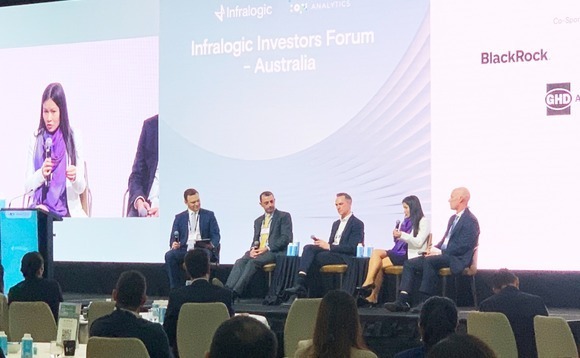
Infrastructure funds move towards software - Infralogic Forum

Software providers are set to become targets for infrastructure investors, provided companies can demonstrate sufficient customer stickiness to underpin consistent revenue streams, the Australia Infralogic Investors Forum heard.
"Software alone is not infrastructure, but I can see a world where it is. What I mean by that is software as a product can be infrastructure if it has entrenched customers that provide recurring revenue through a subscription-based pricing model," said Nancy Tchou, an executive director at Morgan Stanley who leads superannuation and infrastructure fund coverage.
"If that software is entrenched because the customer has to use it in everyday life, there is an argument that it can become essential and with that there is growing market share, scale, and barriers to entry."
It taps into a wider theme that has seen core-plus infrastructure managers stretch the definition of what they will touch to include more operational-like assets. Demographics, energy transition, and technology are cited as contributing factors; so are low interest rates and ample liquidity, which have pushed investors up the risk curve as returns on more conservative assets are bid down.
Digital infrastructure fits this profile in the sense that the proliferation of technology has made certain businesses indispensable. Data centres, for example, were originally more of a real estate play, but they progressed rapidly from private equity to core infrastructure as outsourcing models became increasingly complex, digitalisation took hold, and information shifted to the cloud.
Ultimately, it is for investment committees to decide what qualifies as infrastructure based on their risk appetite. "We've seen discussion around elements of software and can it be pitched as infrastructure. We struggle with the stickiness, high margins, and the inherent cost of maintaining that," said Vaughan Wallace, head of Asia Pacific at Amber Infrastructure.
He does, however, see opportunities in other adjacencies to existing infrastructure coverage, where operators can provide additional services that are value accretive. In this context, edge data centres – which are located closer to end-users than the public cloud and enable a wide range of next-generation applications – have emerged as an area of interest.
"Once you have a footprint, a good team, and customer relationships, you can work with customers on what solutions they need, what assets they need to own, and what assets need to have proprietary access to or can they share with other users," added Christopher Curtain, a senior managing director for Asia Pacific at OMERS Infrastructure.
"They all have pressure on their balance sheets and want to free up capital, so if you can provide solutions on a long-term, lower cost of equity basis, there are some exciting opportunities out there. Edge computing is one."
According to Morgan Stanley's Tchou, some investment committees resist digital infrastructure deals due to the lack of a physical footprint. Overcoming internal resistance means getting comfortable with shorter-term contracts that are regularly renewed and with constant evolutions in technology risk. Commitments come with a degree of certainty in underlying cash flows.
Digital infrastructure also differs from traditional infrastructure in the sources of growth and the typical counterparties. Curtain noted that a toll road assessment is rooted in population and macroeconomic factors. In digital infrastructure, investors must consider the future role of technology and how customers will react to it and interact with it.
As for counterparties, traditional infrastructure assets are usually acquired from governments through privatisations or from other infrastructure funds. In the digital space, sellers tend to be corporates or private equity investors that are working in tandem with founders and management teams that retain sizeable equity positions.
"You are also dealing with large global customers, so having a track record with them is a differentiating factor as a bidder. Insights from equivalent assets and from different jurisdictions are valuable. Who you are matters more in the digital space than in traditional infrastructure," said Gordon Hay, a partner and head of core infrastructure funds at Morrison & Co.
"We were involved in a deal in Europe where you wouldn't get an eye in if you weren't permanent capital and could bring significant experience from other investments in the space. You don't get your foot in the door without speaking the same language, showing a track record, and really understanding the business."
Infralogic is a sister brand of AVCJ under Ion Analytics.
Latest News
Asian GPs slow implementation of ESG policies - survey
Asia-based private equity firms are assigning more dedicated resources to environment, social, and governance (ESG) programmes, but policy changes have slowed in the past 12 months, in part due to concerns raised internally and by LPs, according to a...
Singapore fintech start-up LXA gets $10m seed round
New Enterprise Associates (NEA) has led a USD 10m seed round for Singapore’s LXA, a financial technology start-up launched by a former Asia senior executive at The Blackstone Group.
India's InCred announces $60m round, claims unicorn status
Indian non-bank lender InCred Financial Services said it has received INR 5bn (USD 60m) at a valuation of at least USD 1bn from unnamed investors including “a global private equity fund.”
Insight leads $50m round for Australia's Roller
Insight Partners has led a USD 50m round for Australia’s Roller, a venue management software provider specializing in family fun parks.







